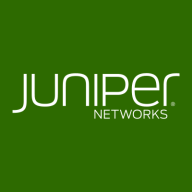


Sophos Cyberoam UTM and Juniper vSRX compete in integrated security solutions. Sophos Cyberoam UTM is favored for security visibility while Juniper vSRX is noted for flexibility and scalability, but Cyberoam's comprehensive security features give it the upper hand.
Features: Sophos Cyberoam UTM offers virus and spam filtration, web filtering, and identity-based policies with bandwidth management. Juniper vSRX provides robust traffic management, VPN capabilities, and application filtering with high performance in virtual environments.
Room for Improvement: Sophos Cyberoam UTM struggles with performance degradation during new attacks and has scalability issues and a cumbersome policy configuration process. Juniper vSRX faces challenges with GUI complexity, stability issues, and inconsistent support service.
Ease of Deployment and Customer Service: Sophos Cyberoam UTM supports on-premises deployment with reliable on-site support but mixed remote support experiences, praised for its efficient technical support. Juniper vSRX excels in public cloud deployments and hybrid environments but is criticized for support responsiveness.
Pricing and ROI: Sophos Cyberoam UTM offers competitive pricing in the mid-segment, seen as cost-effective with moderate ROI despite cumbersome licensing. Juniper vSRX has a high price point affecting smaller organizations, deemed a solid long-term investment but with questioned ROI due to high immediate costs.
Clients are now comfortable and not wasting productive hours on IT support.
The automation part is giving us a cost benefit and speed; we can react faster.
It's a very useful tool to mitigate and protect your enterprise.
They offer very accurate solutions.
The quick resolution of issues with Fortinet FortiGate is due to the support of the company and the fact that the equipment is easy to work with.
I would rate the technical support for Fortinet FortiGate a ten out of ten.
I would rate their support a ten out of ten.
They resolve issues timely once connected.
Technical support is effective and responsive.
I would rate their technical support a solid nine out of ten.
They scale up really well from smaller models like the FortiGate 40 and 50 to bigger sites with the FortiGate 100 for more throughput - up to enterprise datacenters.
The variation comes in terms of the interfaces and throughputs, but from a security perspective, you get the same benefit, irrespective of whether you have an entry-level unit or an enterprise.
We determine sizing based on multiple factors: number of users, available links, traffic types, server count, services in use, and whether services will be published.
Juniper vSRX is a highly scalable solution, and I would rate its scalability a nine out of ten.
We're experiencing 99.999% availability consistently.
I would rate the stability of Fortinet FortiGate a ten out of ten.
Currently, we are experiencing a general outage of one of the main internet service providers of the Dominican Republic, and we have not been impacted in our operations because with SD-WAN, we have another internet service provider and we are working with the second WAN connection without any disruption.
Investing in a solution that can accommodate such growth would be more cost-effective than repeatedly purchasing new hardware.
While Fortinet claims to offer a comprehensive network solution, it falls short in addressing computer application issues, particularly server security.
When considering Sophos XG, which we also use, the logging and reporting functionality is notably more efficient.
I would suggest improving the pricing, particularly the licensing model.
It would be beneficial if phone calls or SMS for two-factor authentication were available.
Sophos Cyberoam UTM should move in the direction of AI capabilities, as the world is moving toward AI.
Last year, I renewed the support for three years, which can sometimes be expensive but depends on the security benefits and how it helps us.
It offers cost savings as it is generally cheaper than the competition.
It is about 20% cheaper.
The pricing is competitive, being neither the most expensive nor the cheapest option.
The price is appropriate, but if you want the real truth, it's actually quite expensive.
In terms of security, we have not experienced any security flaws or loopholes, and it has proven to be quite stable.
FortiGate has helped reduce the risk of cyberattacks that might disrupt our client's production.
These features help reduce our downtime, manage the ISPs, and deploy SLAs for all the website traffic.
These features are crucial for our network security.
It provides bandwidth management, category management of websites, blocking certain elements, IPS blocking, DDoS protection, and VPN management between sites and clients.
I assess the benefit of Sophos Cyberoam UTM's centralized management for multi-appliance handling as a welcome feature because you can manage all the devices at one location, giving you notifications of downtime and updates without necessarily logging into each appliance, so that central management is a very genius move.
The way the rule sets are configured makes it an easily understandable way to manage.
| Product | Market Share (%) |
|---|---|
| Fortinet FortiGate | 35.1% |
| Sophos Cyberoam UTM | 0.6% |
| Juniper vSRX | 1.2% |
| Other | 63.099999999999994% |



| Company Size | Count |
|---|---|
| Small Business | 350 |
| Midsize Enterprise | 130 |
| Large Enterprise | 187 |
| Company Size | Count |
|---|---|
| Small Business | 23 |
| Midsize Enterprise | 8 |
| Large Enterprise | 9 |
| Company Size | Count |
|---|---|
| Small Business | 46 |
| Midsize Enterprise | 29 |
| Large Enterprise | 17 |
Fortinet FortiGate excels in providing integrated VPN, firewalling, and Unified Threat Management (UTM) with centralized management and high availability. It supports remote access and comprehensive threat protection, making it a preferred choice for securing networks.
Fortinet FortiGate offers a robust security platform with features such as strong intrusion prevention, application control, and web filtering. Its integration with Active Directory and SD-WAN functionality provides scalable solutions for large networks. Users appreciate its ease of use through centralized management interfaces, ensuring robust security with flexible configurations. However, FortiGate could enhance its graphical interface and technical support responsiveness, address firmware bugs and costly licensing, improve logging, integrate better with third-party tools, and strengthen scalability and memory for log storage. Complexity in configuration and the need for intuitive features are noted challenges, and there's a demand for advanced security, zero-trust capabilities, and AI integration.
What are the key features of Fortinet FortiGate?Fortinet FortiGate is widely implemented across industries like education, finance, and government. Companies use it for firewall protection, VPN, and SD-WAN capabilities, ensuring secure perimeter and data center security. It facilitates remote access management and traffic routing optimization, offering reliable security and connectivity solutions.
Juniper vSRX is a virtualized security platform that provides advanced threat protection for virtualized and cloud environments. It offers a comprehensive set of security features, including firewall, VPN, intrusion prevention system (IPS), and unified threat management (UTM).
With its scalable architecture, the vSRX can be easily deployed and managed across multiple virtual machines, making it ideal for organizations with dynamic and distributed networks. It also supports high-performance data processing, ensuring minimal impact on network performance.
vSRX is designed to integrate seamlessly with Juniper's broader security ecosystem, enabling centralized management and visibility across the entire network.
We monitor all Unified Threat Management (UTM) reviews to prevent fraudulent reviews and keep review quality high. We do not post reviews by company employees or direct competitors. We validate each review for authenticity via cross-reference with LinkedIn, and personal follow-up with the reviewer when necessary.